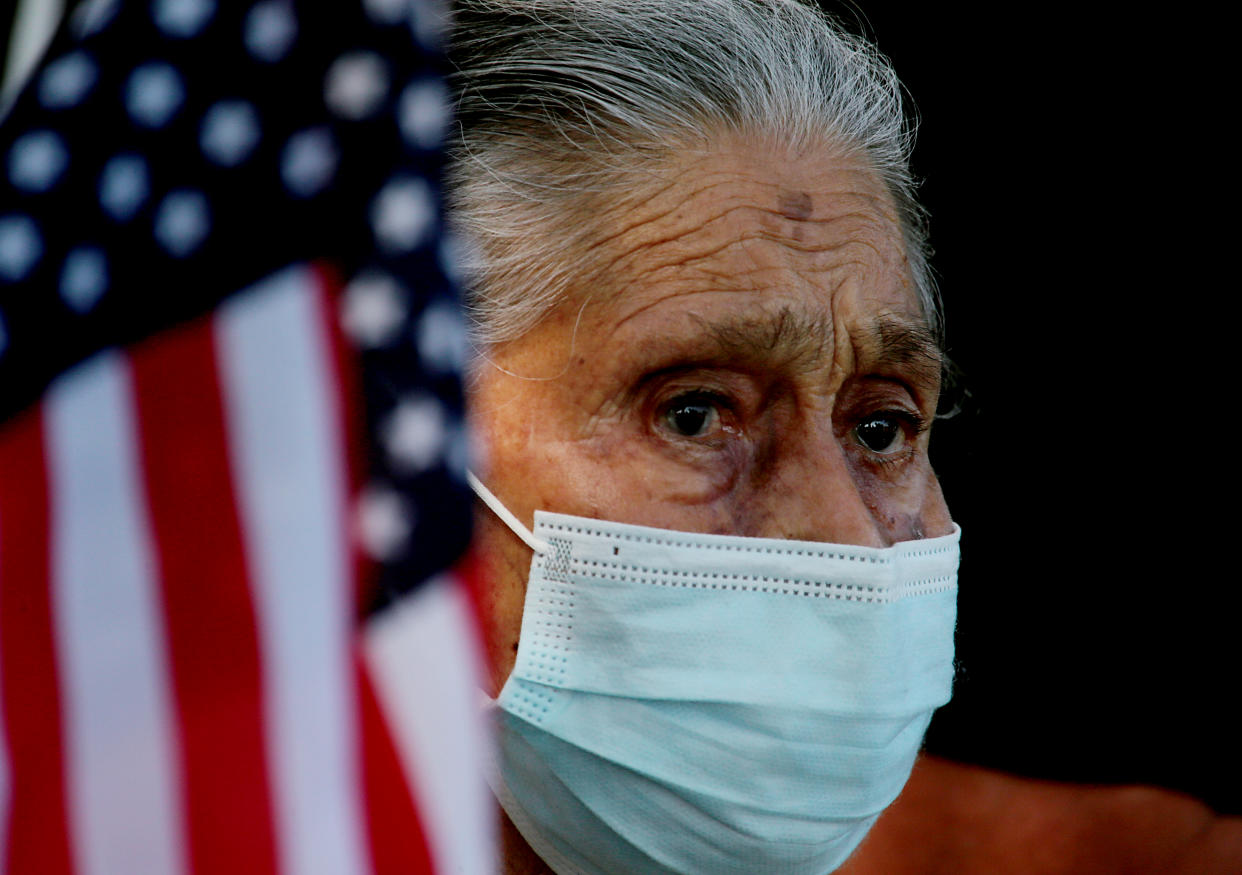Healthcare: Latinos still 'experience particularly high uninsured rates,' new data shows
Although the Affordable Care Act (ACA) has made significant strides in healthcare coverage since it became enshrined into law in 2010, there are still racial and ethnic groups with high uninsured rates.
According to a new report from the Center on Budget and Policy Priorities (CBPP) exclusively shared with Yahoo Finance, the Latino uninsured rate in the US stands at 18%, twice as high as the US average.
“A lot of factors play into whether or not a person is likely to have health coverage,” Breanna Sharer, health policy analyst at CBPP and co-author of the report, told Yahoo Finance. “It can’t really be boiled down into just 'this group is more likely to be uninsured than the other group for this reason.' But immigration definitely correlates a lot with uninsured rates. So does English language proficiency.”
Latinos make up the highest share of the US immigrant population at 44%, more than 20 million people. In 2022, 46% of Latino immigrants without US citizenship were uninsured, according to CBPP findings, tied with American Indians/Alaska Natives for the highest uninsured rate among non-US citizens.
'They don't want to draw attention to their immigration status'
Drishti Pillai, director of immigrant health policy at KFF, explained that both lawfully residing and undocumented immigrants face significant hurdles when obtaining healthcare coverage.
For example, she noted, most lawfully present immigrants, including those with green cards, have a mandatory five-year waiting period before being eligible to enroll in publicly funded coverage and programs like Medicaid and CHIP, though there are exceptions in most states for pregnant women and children.
Meanwhile, undocumented immigrants “are ineligible to enroll in any federally funded coverage, regardless of the length of time they have spent in the US, because of their immigration status,” Pillai told Yahoo Finance. “There are a small number of states that offer state-funded coverage to undocumented immigrants, but at the federal level, undocumented immigrants are not eligible for any health coverage.”
Within the Latino population in the US, there are further disparities based on a person's country of origin, with immigration status playing a major role. Hondurans have the highest uninsured rate at 39%, followed by Guatemalans at 33%, Salvadorans at 24%, and Mexicans at 19%. These four groups also make up the largest share of the undocumented Latino population in the US.
“In general, many undocumented immigrants are fearful of signing up for benefits because they don’t want to draw attention to their immigration status,” Pillai said. “Many undocumented immigrants end up relying on community health centers as their usual source of care. So I think about 4 in 10 undocumented immigrants, most of whom are Hispanic, say that a community health center is their usual source of care because community health centers don’t usually ask for immigration status or require you to have insurance coverage, and they also offer services that are linguistically and culturally appropriate.”
Language barriers are another major obstacle — roughly two-thirds of Latino immigrants have limited English proficiency, often making it harder to access critical services or get a job.
“This can lead to challenges in trying to figure out how and where to sign up for care and whether or not an interpreter is provided to you when you’re receiving care,” Pillai said. “Some immigrants say they rely on their children acting as their interpreters. These language barriers are a major issue for the Hispanic population in general, and then Hispanic immigrants especially.”
Sharer added that finding outreach and enrollment assistance that’s “language appropriate” is a significant challenge.
“Administrative burdens are a big issue,” she said. “There’s quite a large number of people who are uninsured and say they tried to enroll in coverage but couldn’t find the right plan for them or couldn’t figure out how to enroll.”

'Some states have opted to go further'
To reduce the disparities among the uninsured population, CBPP had two key policy recommendations: closing the Medicaid coverage gap and making the premium tax credit enhancements permanent.
In 2012, the Supreme Court ruled that states should decide whether to adopt the ACA's expansion. In the 12 years since the decision, 10 states still haven’t expanded Medicaid, which has translated to more than 2 million individuals without healthcare coverage due to the “coverage gap.”
This occurs when a person lives in poverty but is ineligible for financial assistance, as only incomes above 100% of the federal poverty level qualify for premium tax credits that lower an individual's monthly premium. People of color are disproportionately represented in the coverage gap.
“The federal restrictions are pretty strict,” Sharer said. “States can choose to extend Medicaid coverage to whatever threshold their state has, whether they expanded or not, to people who have a lawfully residing status and/or children or those who are pregnant, but some states have opted to go further, using their own state funding. Some states have extended coverage to all people who qualify based on their income, regardless of immigration status.”
Meanwhile, enhancements for the premium tax credit — defined by the IRS as “a refundable tax credit designed to help eligible individuals and families with low or moderate income afford health insurance purchased through the health insurance marketplace" — are set to expire in 2025.
"If you look at the data, in terms of affordability, those enhancements could be particularly helpful for certain groups that have lower incomes and also groups that tend to be more self-employed,” Gideon Lukens, CBPP senior fellow and director of research and co-author of the report, said, noting an ASPE study that found marketplace enrollment between 2021 and 2023 grew by over 80% for Black and Latino people. “This kind of shows the value in those premium tax credits: improving affordability and helping reduce disparities.”
—
Adriana Belmonte is a reporter and editor covering politics and healthcare policy for Yahoo Finance. You can follow her on Twitter @adrianambells and reach her at adriana@yahoofinance.com.
